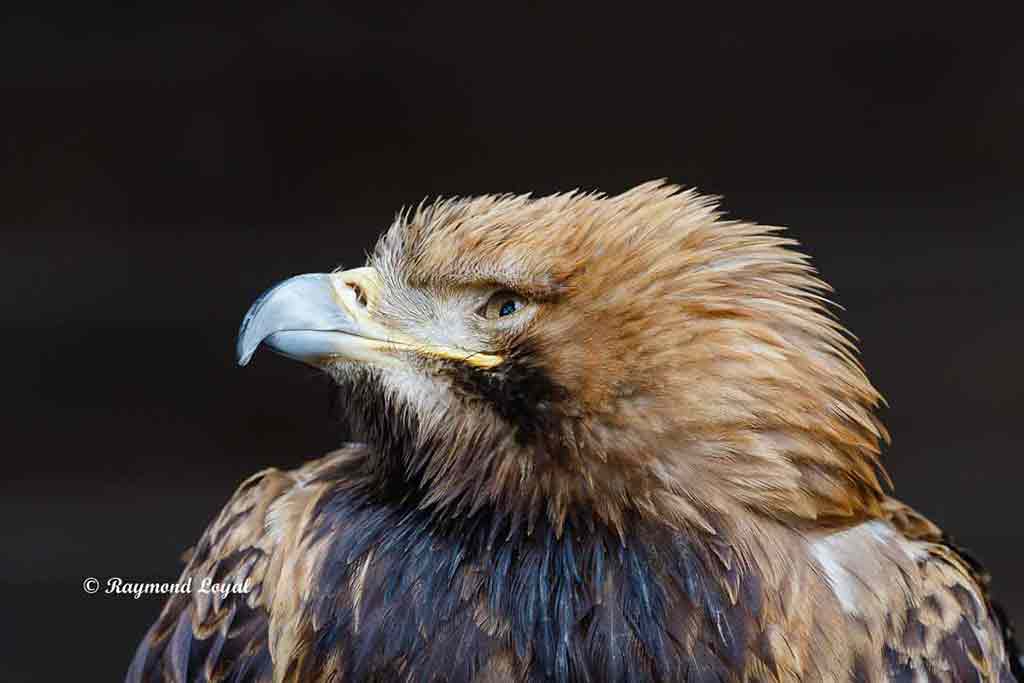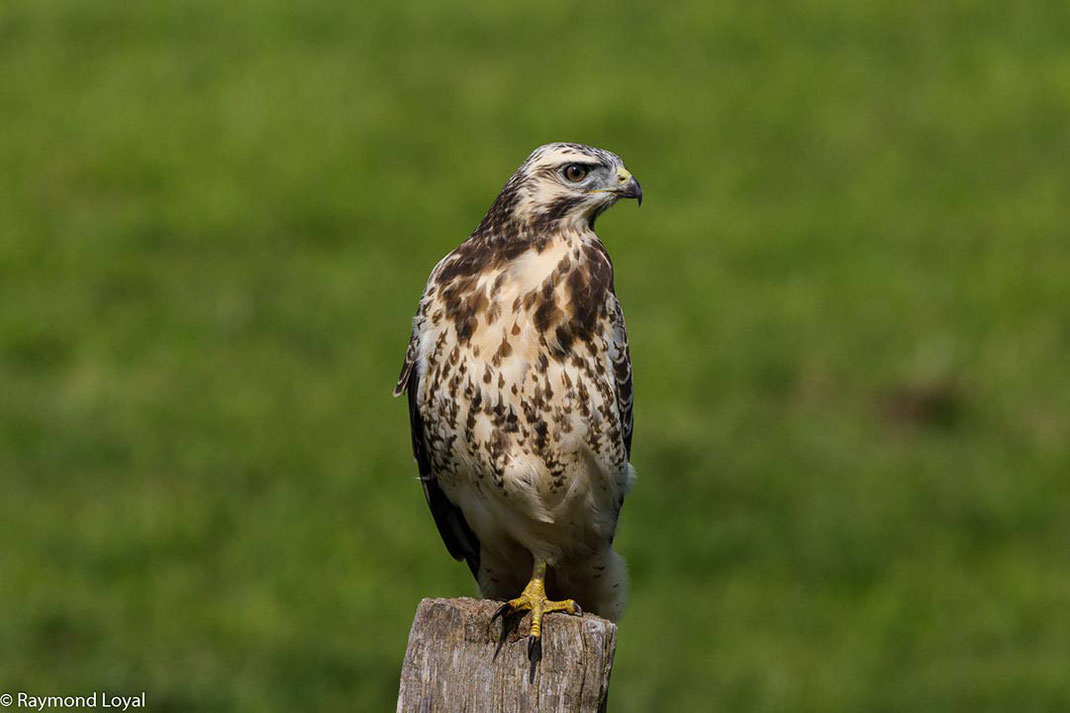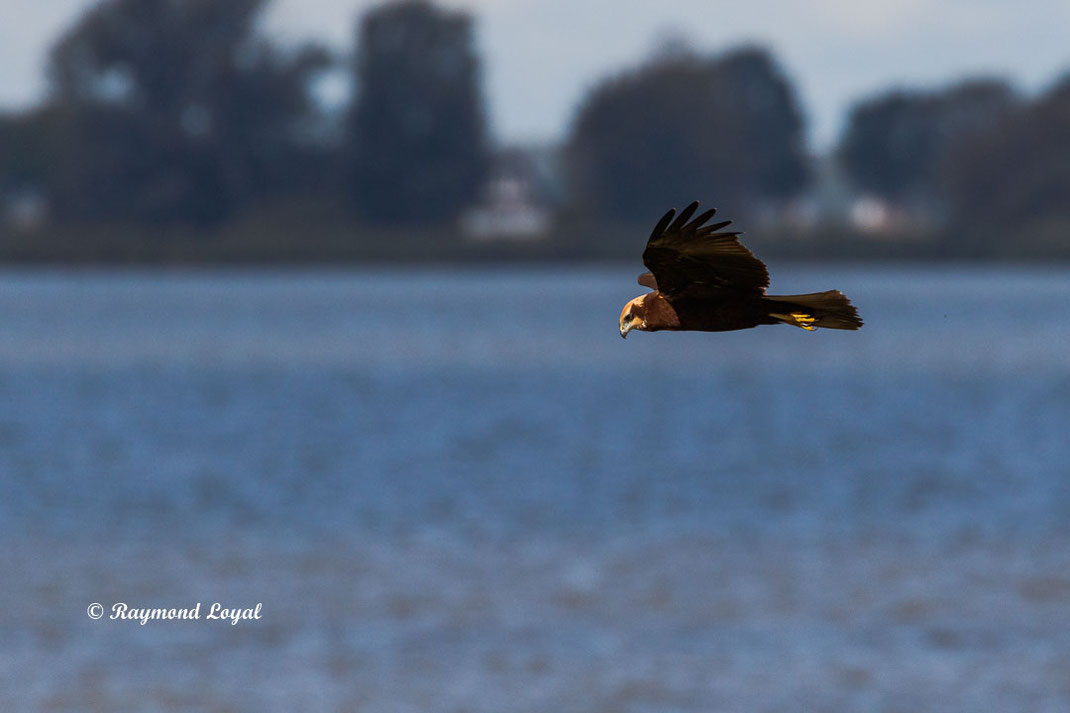Birds of prey
Introduction - Preliminary Notes
Birds of Prey belong to the order Accipitriformes and are moste diurne birds, they feed on a range of small to medium sized mammals and catch their prey alive. Some larges species live on carrion (vultures). Falcons form their own order but are also mentioned in this article.
Despite owls also feeding on live prey they do not belong to the order Accipitriformes but to the order Strigiformes. Because of Vultures being very special we dedicate a page to them; to learn more click here.
The main characteristics of Birds of Prey are:
- strongly hooked bills
- toes with sharp talons
- mostly no differences between male and female plumages
- femals are mostly larger than males
- very good flight abilities
- larger species like soaring within thermals thereby gaining hight and then gliding between termals, thereby losing hight. Mostly seen from noon onwards conditions for thermals are best.
The term birds of prey covers 47 diurne species in three families. The following classification in parts relates to the Western Palearctis but in other parts has a more global approacch.
Eagles and what they have in common
Eagles are widely devided into Aquila Eagles, Snake Eagles, Fish Eagles and Fishing Eagles and finally the Osprey. All groups have their own specific characters.
Fish Eagles
Fish Eagles belong to the largest eagles and can easily be recognised by their extraodinary large beak, the flight silhouette and the short tail. They mostly feed on fish, waterfowl and even carrion. They are mostly not depending on specific kinds of prey but usually take what is available in their habitat. Globally Fish Eagle are a group of eight species und the genus Haliaeetus and are distributed nearly all over the world.
Order: Birds of Prey (Accipitriformes)
Familiy: Kites, Old World Vultures, harriers, hawks, buzzards, eagles (Accipitridae)
- White-tailed Eagle (Haliaeetus albicilla)
- Bald Eagle - Bald Fish-eagle (Haliaeetus leucocephalus)
- Pallas's Fish-eagle (Haliaeetus leucoryphus)
- Steller's Fish-eagle (Haliaeetus pelagicus)
- White-bellied Fish-eagle (Haliaeetus leucogaster)
- Sanford's Fish-eagle (Haliaeetus sanfordi)
- African Fish-eagle (Haliaeetus vocifer)
- Madagascar Fish-eagle Haliaeetus vociferoides)

The Aquila Eagles in the Western Palearctic
The legs of the aquila eagles are featherd down to their toes, their flight silhouette shows long and broad wings and a their tail is rather short, with regard to their overall size. Aquila Eagles are not as agile in flight as their larger relatives, but they do excell in gliding. They do hunt their prey out of cover and kill their prey mostly on the ground. Only the Greater Spotted Eagle and the Booted Ealge are able to catch prey in flight.
Order: Birds of Prey (Accipitriformes)
Familie: Kites, Vultures, Hawks, Eagles (Acciptitridae)
- Golden Eagle (Aquila chrysaetos)
- Eastern Imperial Eagle (Aquile heliaca)
- Spanish Imperial Eagle (Aquila adalberti)
- Lesser Spotted Eagle (Aquilia pomarina)
- Greater Spotted Eagle (Aquila clanga)
- Booted Eagle(Aquila pennata)
- Bonelli's Eagle (Aquila fasciata)
- Verreaux's Eagle (Aquila verreauxii)
- Steppe Eagle (Aquila nipalensis)
- Tawny Eagle (Aquila rapax)
Ospreys and Snake Eagles
A bit of a star is the Osprey, who excelles a a real cosmopolitan, because of its near global distribution. Ospreys feed mostly on fish and occasionally only catch snakes. They catch their fish by abruptly switching from search flight into a breathtaking nose-dive.
As their name already has it, Snake Eagles feed almost exclusively on snakes. That apart, the diet is completed with lizzards and frogs and only very rarely even small birds.
Order: Birds of Prey (Accipitriformes)
Family: Ospreys (Pandionidae)
Genus: Fischadler (Pandion)
- Osprey (Pandion haliaetus)
Order: Birds of Prey (Accipitriformes)
Family: Kites, Vultures, Hawkes, Eagles, Buzzards (Accipitridae)
Genus: Snake Eagle (Circaetus)
- Short-toed Snake Eagle - Short-toed Eagle (Circaetus gallicus gallicus) - Europe
- Beaudouin's Snake Eagle (Circaetus beaudouini) - Africa
- Banded Snake Eagle - Smaller Banded Snake Eagle (Circaetus cinerascens) - Africa
- Brown Snake Eagle (Circaetus cinereus) - Africa
- East African Snake Eagle - Southern Banded Snake Eagle (Circaetus fasciolatus) - East Africa
- Black-chested Snake Eagle (Circaetus pectoralis) - Africa
- Bateleur (Terathopius ecaudatus) - Africa
Goshawks and Sparrowhawks with their special features
Goshawks and Sparrowhawks belonging to the genus Accipiter form an impressive familiy consisting of nothing less than 54 species - allies included which are, with the exception of Greenland, distributed around the globe.
Goshawks and Sparrowhawks are specialists with regard to habitat and food. Their body is specifically built for their way of hunting and catching their prey. Most obvious to us are the rather shortish round wings and, compared to overall body and wing sizes, relatively long tails. Sparrowhawks and Goshawks hunt, using the cover of the landscape and they catch their prey by surprise. Over short distances they can mobilise huge energy and in flight over short distances and still remain very agile. Whithin the Accipiter genus sexes might not always look dissimilar but usually, compared to the female, the male is smaller by a third. Following the Accipiter of the world are listed, separated by geographical areas.
Order: Birds of Prey (Accipitriformes)
Family: Vultures, Eagles, Kites, Hawks, Harriers (Accipitridae)
Genus: Goshawks and Sparrowhawks (Accipiter)
Holarctic and Palearctic Accipiters
- Northern Goshawk (Accipiter gentilis)
- Eurasian Sparrowhawk (Accipiter nisus)
- Levant Sparrowhawk (Accipiter brevipes)
Afrotropical and Malagasy Accipiters
- Shikra (Accipiter badius)
- Ovambo Sparrowhawk (Accipiter ovampensis)
- Rufous-breasted Sparrowhawk (Accipiter rufiventris)
- Little Sparrowhawk (Accipiter minullus)
- Red-thighed Sparrowhawk (Accipiter erythropus)
- Chestnus-flanked Sparrowhawk (Accipiter castanilius)
- Great Sparrowhawk - Black Sparrowhawk (Accipiter melanoleucus)
- African Goshawk (Accipiter tachiro)
- Red-chested Goshawk (Accipiter toussenelii)
- Henst's Goshawk (Accipiter henstii) - Madagascar
- Madagascar Sparrowhawk (Accipiter madagascariensis) - Madagascar
- Frances's Sparrowhawk (Accipiter francesii) Madagascar
East Palearctic, Indomalayan, Sulawesi and Moluccan & Fijian Accipiters
- Japanese Sparrowhawk (Accipiter gularis)
- Besra (Accipiter virgatus)
- Chinese Sparrowhawk (Accipiter soloensis)
- Nicobar Sparrowhawk (Accipiter butleri)
- Crested Goshawk (Accipiter trivirgatus)
- Sulawesi Crested Goshawk (Accipiter griseiceps)
- Vinous-breasted Sparrowhawk (Accipiter rhodogaster)
- Sulawesi Small Sparrowhawk (Accipiter nanus)
- Spot-tailed Sparrowhawk (Accipiter trinotatus)
- Moluccan Sparrowhawk (Accipiter erythrauchen)
- Moluccan Goshwak (Accipiter henicogrammus)
- Fiji Goshawk (Accipiter rufitorques)
New Guinea Accipiters and Allies
- Doria's Hawk (Megatriorchis doriae)
- Bürger's Hawk - Chestnut-shouldered Hawk (Erythrotriorchis buergersi)
- Black-mantled Goshawk (Accipiter melanochlamys)
- Grey-headed Goshawk (Accipiter poliocephalus)
New Britain, New Guinea and Melanesian Accipiters
- New Britain Goshawk (Accipiter princeps)
- Slaty-backed Sparrowhawk (Accipiter luteoschistaceus)
- New Britan Sparrowhawk (Accipiter brachyurus)
- New Caledonia Goshawk (Accipiter haplochrous)
- Meyer's Goshawk (Accipiter meyerianus)
- Imitator Sparrowhawk (Accipiter imitator)
- Pied Goshawk (Accipiter albogularis)
Australien Accipiters
- Grey Goshawk (Accipiter novaehollandiae)
- Varied Goshawk (Accipiter hiogaster)
- Grey-throated Goshawk (Accipiter griseogularis)
- Collared Sparrowhawk (Accipiter cirrhocephalus)
- Brown Goshawk (Accipiter fasciatus)
Buzzards and what they have in common
One could conclude that Buzzards are a smaller edition of the much larger eagles. At least a look at their flight silhouettes might awaken such associations: long wings and a rather shortish but broad tail are their main characteristics in flight. Their behaviour, especially in flight looks rather clumsy. Buzzards hunt their prey on the ground. They start either from an observation point or out of a search flight. In case of favourable winds they do hover over the ground, like the Common Kestrel, though this is something rarely to be seen. Their feet are much weaker than is the case with eagles, leaving them confined to catching prey no heavier than 500 g a piece and their diet mostly consinsts of rodents.
The great exception is the Honey Buzzard because this species is not closely related to Buzzards in general. Its field characters and behaviour is much different from the buzzards. The diet mainly consits of nests, larvae, pupae and adults of wasps, hornets and bumble bees. Honey Buzzards reach their food by digging out the nests of wasps and hornets with their feet and beak. Because of the feet being feathered down to the toes, the birds are mostly immune against the stings of the insects.
Taxonomy of Buzzards
Order: Birds of Prey (Accipitriformes)
Family: Kites, Vultures, Hawks, Eagles (Acciptitridae)
Genus: Buzzards (Buteo)
- Long-legged Buzzard (Buteo rufinus)
- Steppe Buzzard (Buteo buteo vulpius)
- Common Buzzard (Buteo buteo)
- Rough-legged Buzzard (Buteo lagopus)
- Red-backed Hawk (Buteo polyosoma)
- Harris Hawk (Parabuteo unicinctus)
- Black-chested Buzzard-eagle (Geranoaeetus melanoleucus)
Genus: Honey Buzzards (Pernis)
- Honey Buzzard (Pernis apivorus)
- Crested Honey Buzzard (Pernis ptilorhynchus)
Harriers and what they have in common
We know harriers from their lurching flight, their high circling and soaring flights they perform over marshland and open country. In flight the wings are kept in a v-position. Usually they breed in thick marshy vegetation. They benefit from a sharp hearing and long legs to and locate and catch prey in thick vegetation.
Special Features of Harriers
- Medium-sized birds of prey
- long slim wings
- long tails
- long slimg legs
- face veil
Taxonomy of Harriers
Order: Birds of Prey (Accipitriformes)
Family: Kites, Vultures, Hawks, Eagles (Acciptitridae)
Genus: Buzzards (Buteo)
- Western Marsh Harrier (Circus aeruginosus)
- Northern Harrier (Circus cyaneus)
- Montagu's Harrier (Circus pygargus)
- Pallid Harrier (Circus macrourus)
Kites and their Features
For a start, Kites are brilliant gliders. They slowly glide with angled wings over their hunting areas. Most obvious to the spectator are how kites expertly use their tail to change directions or when hovering over a certain spot to keep the position. Also their gabled tail is a striking feature of their flight silhouette. Although kites are already large birds of prey, their rather slim build legs prevent them from catching large prey. They feed on carrion, fish or simply try to steal the catch of other birds of prey.
The Old World Kites
- Red Kite (Milvus milvus)
- Black Kite (Milvus migrans)
- Cape Verde Kite (Milvus fasciicauda)
- Black-shouldered Kite (Elanus caeruleus)
- Black-eared Kite (Milvus lineatus)
- Yellow-billed Kite (Milvus aegyptius)
The Falcons (Falconiformes) in the Western Palearctic
Nowadays, falcons are a separate order from the birds of prey. Although they also do feed on prey, it is their specific built, behaviour and the way how they catch their feed that makes them very special. The characteristics they have all in common are:
- Size: small to medium-sized
- mostly active during daylight
- Diet mostly consists of small vertebrate and insects
- Morphology: pointed wings, round head, dark large eyes, relatively short beak with a bulge in the upper beak (=the so-called falcon tooth)
- Prey mostly is killed by biting into the prey's neck
- round nose holes
- Falcons don't built own nestsites
Globally, there are 38 specions classified as Falcons, whereas in the Western Palearctic (=Europe, Northern Africa and the Middle East) there are only 12 species of which only five species are distributed within Europe, as breeding birds, winter guests or migrants:
- Common Kestrel (Falco tinnunculus)
- Lesser Kestrel (Falco naumanni) South, Southeast Europe and Northern Africa
- Red-footed Falcon (Falco vespertinus) Migrant
- Eurasian Hobby (Falco subbuteo) Breeding bird in Germany and Central Europa
- Eleonora's Falcon (Falco eleonorae) Mediterranean Area
- Sooty Falcon (Falco concolor)
- Peregrine Falcon (Falco peregrinus) Annual bird, winter guest in Europa
- Barbary Falcon (Falco pelegrinoides) Between North Africa the Western Middle East (Sinai)
- Merlin (Falco columbarius) Winter guest and migrant
- Gyrfalcon (Falco rusticolus) Norway
- Saker Falcon (Falco cherrug) Southeast Europe, Middle East and eastwards to the Caspian Sea
- Lanner Falcon (Falco biarmicus) Mediterranean Area
- Lagger Falcon (Falco jugger) Indian subcontinent










